While many animal species have gone extinct either through neglect, ignorance or just bad luck, there are still many projects around the world that are helping to bring some species back from the brink.
Inthis gallery we feature extracts from the book Extinction: Our fragile relationship with life on Earthby Marc Schlossman, highlighting some positive stories of conservation.
Extinction explores endangered and extinct species and the factors threatening them through a rare behind-the-scenes look at one of the most important sets of natural history collections in the world, at the Field Museum in Chicago, USA.
As well as some of the images of the museum's collection photographed by Marc, we've brought together some of our favourite examples of successful conservation projects featured in the book.
Chinese alligator

The Chinese alligator is endemic to the lower Yangtze River region of China. This freshwater reptile inhabits slow-moving bodies of water and during long periods of low temperature it rests in a state of inactivity, like a kind of hibernation. It is one of the smallest crocodilian species, at around 1.8m long and weighing only 38.5kg.
The Chinese alligator is one of the most endangered species of crocodiles, its population having been severely fragmented and almost eradicated. Along with several other species endemic to the river, destruction or alteration of their habitat have been the driving forces behind the species' critical endangerment, namely through the building of dams and the conversionof marshland to agriculture. The species also has to contend with human contact. Alligators are killed out of fear, for their meat, and for their organs that are coveted in traditional Chinese medicine.
The Anhui Research Center for Chinese Alligator Reproduction was established in 1979, and has been very successful in the captive breeding of the species. At their centre they house about 75 per cent of the 20,000 individuals that have been produced in captivity worldwide, in 26 protected reserves. As of 2019, 228 Chinese alligators have been released into the wild at the Anhui Chinese Alligator Nature Reserve.
There is also an attempt by the Chinese governmentto create habitats in other provinces in which captive-bred animals can be reintroduced. Nonetheless, as with any species that is perceived as a threat or as a source of profit, public education on the decline of the Chinese alligator is paramount to its survival.
Kirtland’s warbler

Kirtland’s warbler is a large species of warbler native to north and central Michigan in the USA and sometimes observed in Wisconsin, as well as Ontario and Quebec in Canada. In winter the bird migrates toa small area in the Bahamas, and is characterised by its bright yellow belly, black or brown body, and white ring around the top and bottom of its eyes. They average 15cm long and have a distinctive call described as 'chip-chip-che-way-o'.
This species was named after Ohio doctor and amateur naturalist Jared Potter Kirtland (a name that activists are working to change to be more descriptive of the species or its habitat, along with the names of several other eponymous birds). They have very specific habitat requirements, which has contributed to their historic decline in numbers. They only nest in dense jack pine forest, in jack pines that are 1.5 to 6m tall and 9 to 13 years old (which continues to baffle scientists), and near to the ground on lower branches.
Kirtland’s warblers depend on fires for their continued survival. Intense heat causes pinecones to open and release seeds and the fires also create new areas for jack pines to grow and develop in time into suitable breeding habitat.
Numbers of Kirtland’s warbler dramatically declined as European settlers arrived inNorth America, and as a result of land clearances, prevented the incidence of natural forest fires.By the mid-20th century the species was near extinction. In addition to loss of habitat, Kirtland’s warbler was — and still is — threatened by the parasitic brown-headed cowbird, which replaces a warbler egg with one of its own that the warbler then unknowingly rears.
The Kirtland’s Warbler Recovery Plan was developed in Michigan in 1975 to trap the cowbird, successfully reducing the occurrence of brood parasitism from 70 per cent to one per cent by 2018. Land was also conserved for the cutting and planting of young jack pines, allowing the warbler population to quadruple between 1990 and 2000. It was officially removed from the US federal list of endangered species in 2019 and is currently listed by the IUCN (International Union for Conservation of Nature) as near-threatened, making the recovery of Kirtland’s warbler a shining example of successful conservation.
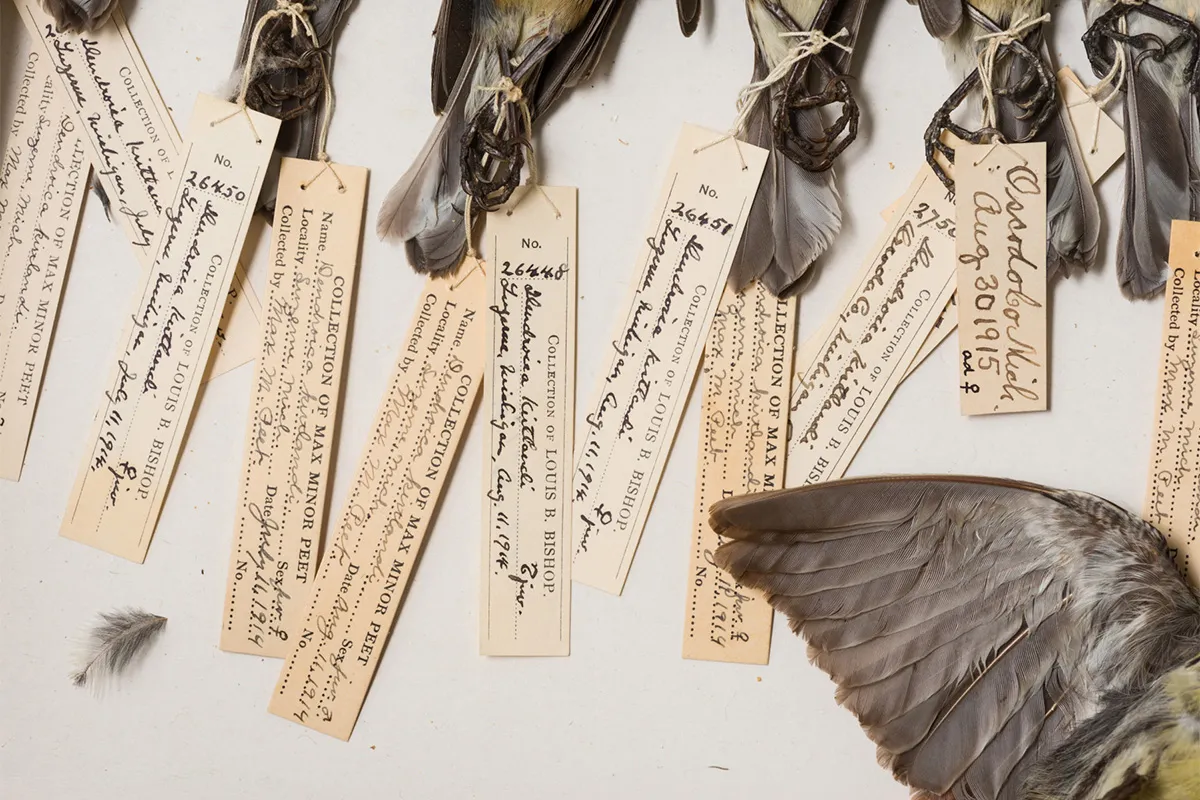
Southern white rhinoceros
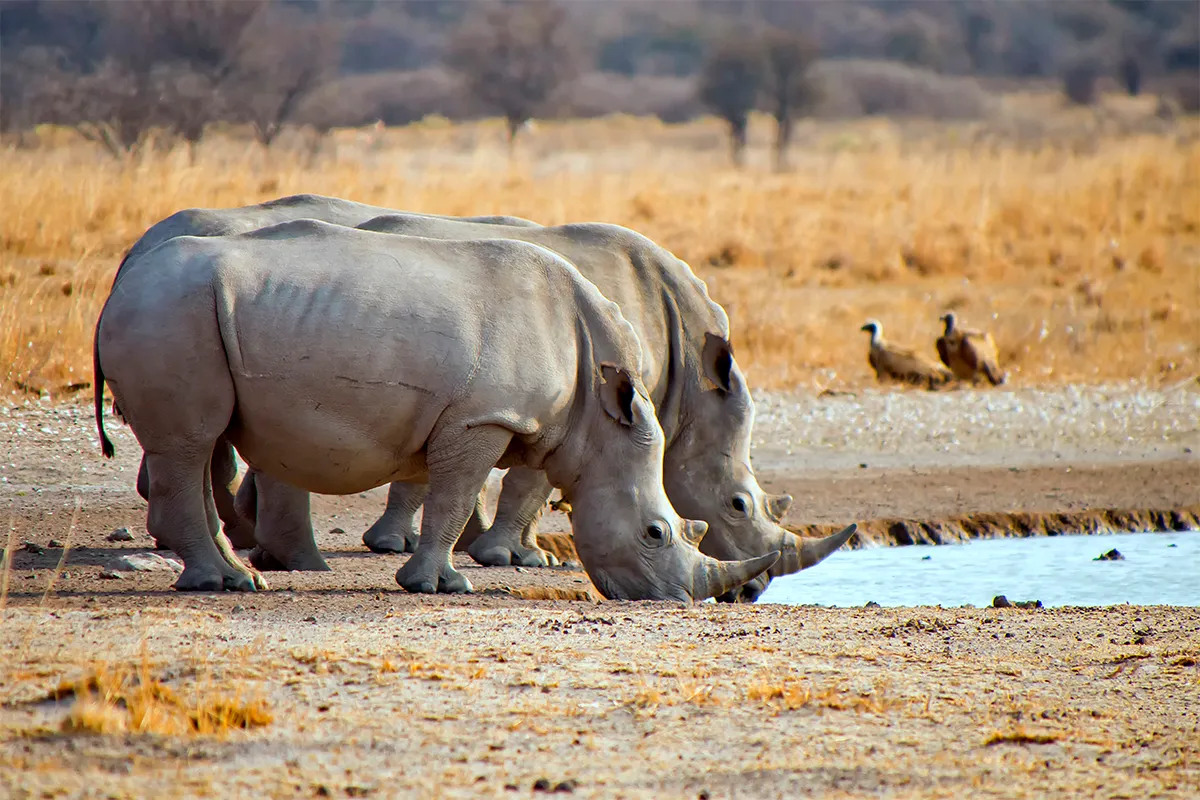
The southern white rhinoceros is one of two subspecies of white rhinoceros and is nativeto southern Africa (with 93 per cent of their population located in South Africa). In 1900, they were the most endangered out of the five species of rhino in the world, with less than 20 individuals remaining on a reserve in South Africa. Over the decades their numbers gradually increased, assisted by successful protection and management measures.
Today, there are an estimated 18,000 individuals in the wild, making the southern white rhinoceros the most abundant of all rhinos. In contrast, only two female northern white rhinos are left in the world, living in captivity.
In the 19th century, Dutch and English settlers in southern Africa killed rhinos for meat and sport. They hunted them near to extinction before governments began to take action to protect the remaining rhinos. Ironically, it was the market for legal white rhino trophy hunting that contributed to the species’ recovery — South Africa has permitted trophy hunting since 1968.
While the southern white rhino is generally thriving, the black rhino, which occurs in countries with less economic stability, has dramatically declined over the years and is now critically endangered.
Nonetheless, the southern white rhino is not free from all threats. Illegal poaching for its horns continues; ground-up rhino horn is still in demand in Asian traditional medicine and carved horns are popularly used to make ceremonial daggers in Yemen. They alsostill face persistent habitat loss as human populations spread and more land is developed.
However, the southern white rhino, protected by both the state and the private sector, has become a poster child for effective conservation of Africa’s wildlife. Pure economics, fueled by human greed, was cleverly used as a powerful incentive to keep the southern white rhino from extinction.
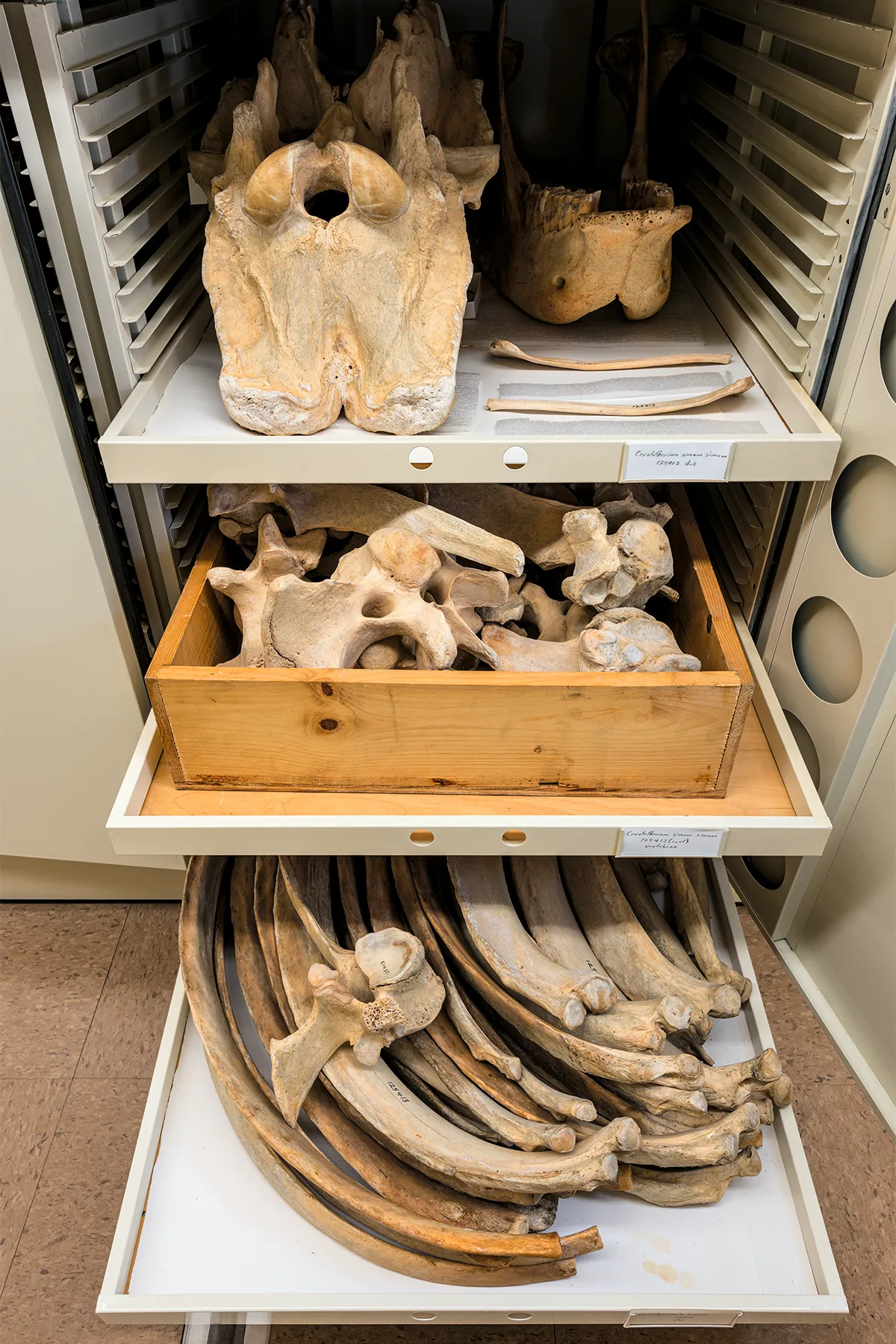
California condor
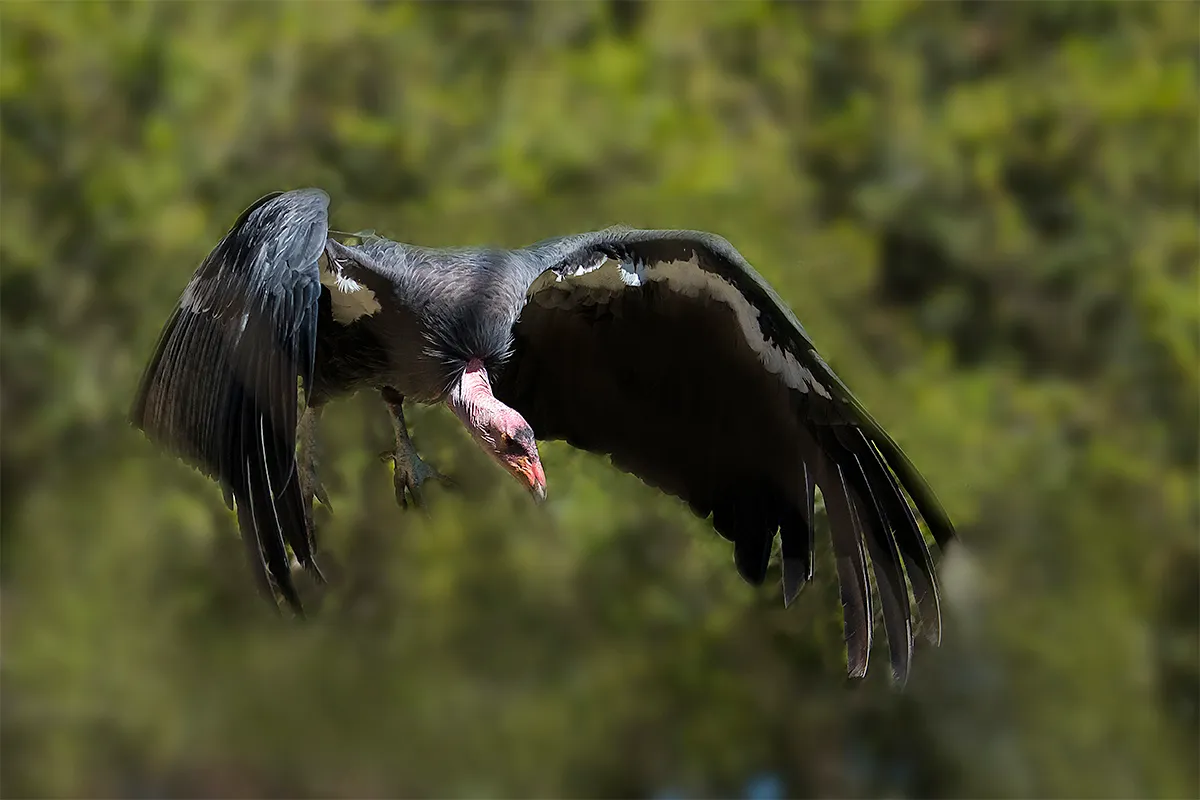
The California condor is North America’s largest land bird, with a wingspan of nearly 2.7m. It inhabits rocky shrublands, forests, and savannas and can fly at altitudes of up to 4.5km. By the time of westward expansion, the condor’s range was reduced to the mountains of the Pacific Coast. Shooting and poisoning by humans decreased its numbers to 600 by 1890 and by 1982, there were just 22 condors left in the wild.
Initiated in 1975, the California Condor Recovery Program is a cooperative effort by federal, state, and private agencies in the western United States. Controversial debate over how to best manage the condor resulted in all 22 remaining birds being captured by 1987 to starta captive breeding program. 'Double clutching' was used, a technique in which a condor’s single egg is removed to encourage the laying of another egg in that year. Chicks from the incubated eggs were then handled and raised using condor puppets so they did not imprint — a time when young animals form an attachment and develop their sense of identity — on humans.
Between 1992 and 2019, a total of 287 condors have been released into the wild and the first wild condor chick hatched in 2002. Condors have been reintroduced to various locationsin the USA including Arizona, California, as well as Baja California, Mexico. As of 2020 there were over 500 condors, with more than 300 living in the wild. If the population continues to grow the species will be downgraded to endangered by the IUCN in 2024.
Yet today, wild condors continue to be victims of human action. As they mainly feed on carrion — the dead and decaying flesh of animals — condors are extremely vulnerable to lead poisoning from ingested lead shot, which is the leading cause of mortality for the species. Since 2008 hunters are required to use non-lead ammunition in condor recovery areas.
Future plans for the species include the establishment of a captive breeding facility in northern California’s Redwood National Park in 2021, initiated by the area’s Yurok tribe. California condors are sacred to the Yurok, and were identified by tribe elders as the most important animal to return to ancestral lands.
Atlantic goliath crouper
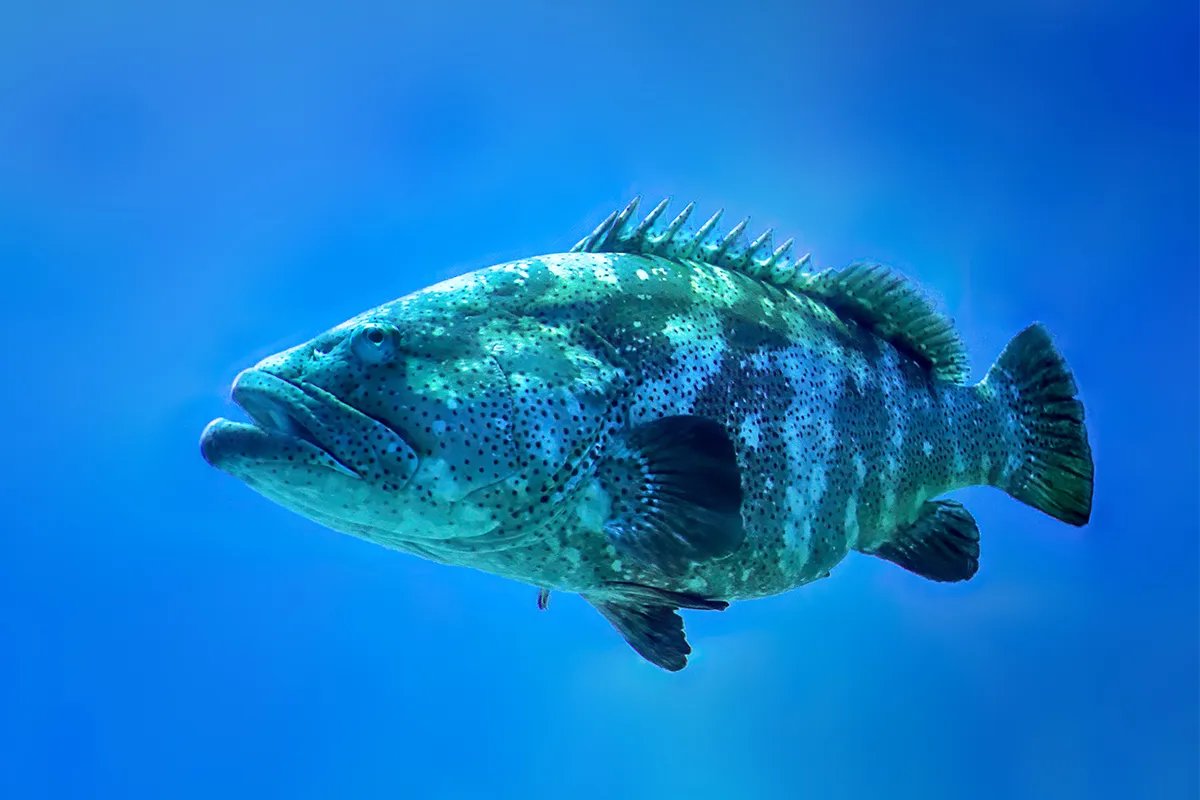
Reaching lengths of up to 2.5m and weighing as much as 358kg, the Atlantic goliath grouper is a species that lives up to its name. This stocky fish is in thesea bass family, Lateolabracidae. It is mainly found in tropical waters around coral reefsat depths of between 4.5 and 50m. It is distributed from Florida to Brazil in the western Atlantic Ocean and from Senegal to Democratic Republic of the Congo in the eastern Atlantic.
While they once numbered in the tens of thousands, the world population of Atlantic goliath grouper is said to have declined by at least 80 per cent over the past 40 years, suffering most in the 1970s and 1980s. The species is extremely susceptible to commercial and recreational overfishing due to its size, slow growth, and reproduction rates. Fishing for the goliath grouper is thought to have begun in the late 1800s, and spear fishing of the fish was especially popular in the Florida Keys, USA.
Other threats to the species are increases in ocean temperature that can bring on harmful algal blooms such as red tides. One that occurred in 2005 off the southwest coast of Florida, USA, resulted in the death of an estimated 120 Atlantic goliath grouper, and loss of mangrove habitat where goliath groupers live for the first five years of their lives.
Fishing for Atlantic goliath grouper has been prohibited in the US since 1990 and the species has since experienced some recovery in the Florida region, leading the IUCN to downgrade the species from critically endangered to vulnerable. Fishers now insistthat goliath grouper are so abundant that they interfere with their catches, eating fish right off their lines, and as such are calling for the ban to be renegotiated. Conservationists argue that such claims are exaggerated and that withdrawing the ban would be detrimental to the widespread, long-term recovery of the species.
Kakapo
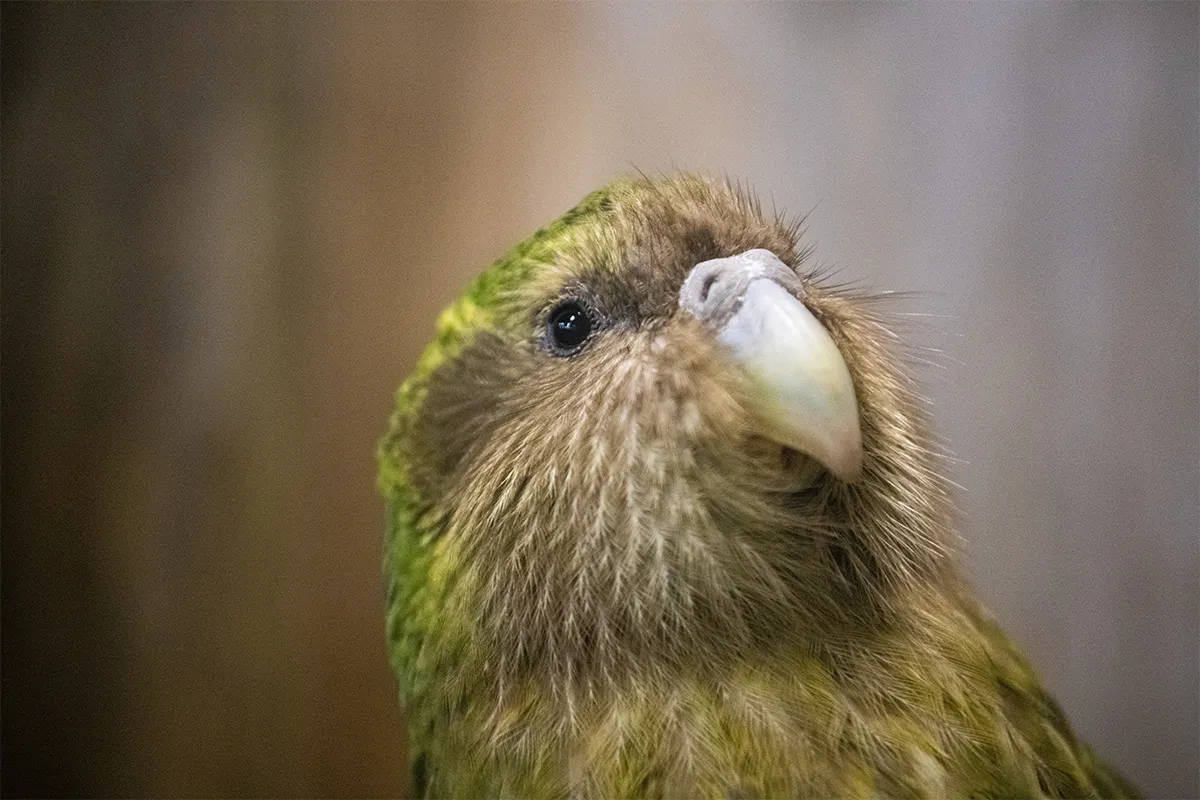
The kakapo is an extremely unusual species of green-feathered parrot native only to New Zealand. The kakapo has a long list of unique characteristics: it is the only flightless parrot in the world (they have wings but use their strong legs to 'jog' along the ground). It is the world’s heaviest parrot (weighing up to 3.6kg); it is nocturnal (the name 'kakapo' means 'night parrot' in Maori); and it is one of the longest living birds, with reports of some reaching 90 years of age. They are known as 'owl parrots' because their faces are owl-like, and they have a sweet, musty scent similar to honey.
Before human colonisation of New Zealand, kakapo inhabited the entire country, from North Island to South Island, from mountains to sea level, in every habitat imaginable, confirmed by fossil discoveries. Their numbers began to dwindle with the arrival of the Maori people, who hunted birds and also introduced land mammals such as cats, rats, and stoats to New Zealand for the first time. Kakapo’s natural defense mechanism is to freeze when threatened, usually a strategy to avoid aerial predators but not a successful tactic against the new terrestrial predators.
When European settlers arrived in the early 1800s, the bird was largely confined to North Island. They too introduced land mammals and began clearing forest, which continued to decimate the kakapo population. Kakapo reached their lowest number in 1995, with only 51 known individuals remaining.
Thanks to a successful relocation and recovery program supported by the New Zealand government, the surviving population was evacuated to offshore island sanctuaries in 1987, islands where predators such as rats and stoats were eradicated before relocation. By 1995, with the situation still critical, the Kakapo Recovery Plan was initiated and resulted in a 68 per cent increase in the bird’s numbers over a period of eight years. As of 2021, 204 kakapo remain and with the attention and care of devoted rangers and researchers, that number is expected to rise.
In 2019 kakapo had their most successful breeding season when 76 chicks hatched. Then a chick died of aspergillosis, a fungal respiratory disease. 51 kakapo were sent to veterinary and human hospitals in Auckland for diagnosis and treatment. An antifungal drug was administered and of 21 cases, 12 birds recovered and 9 died, a success given the difficulty of containing the outbreak.
Ongoing conservation efforts by the government involve creating more predator-free islands where kakapo can be relocated. At present there is not one large enough to hold more than 100 kakapo. As stated by the Kakapo Recovery Plan website, “Ultimately, a distant dream is to be able to reintroduce kakapo to the mainland.”
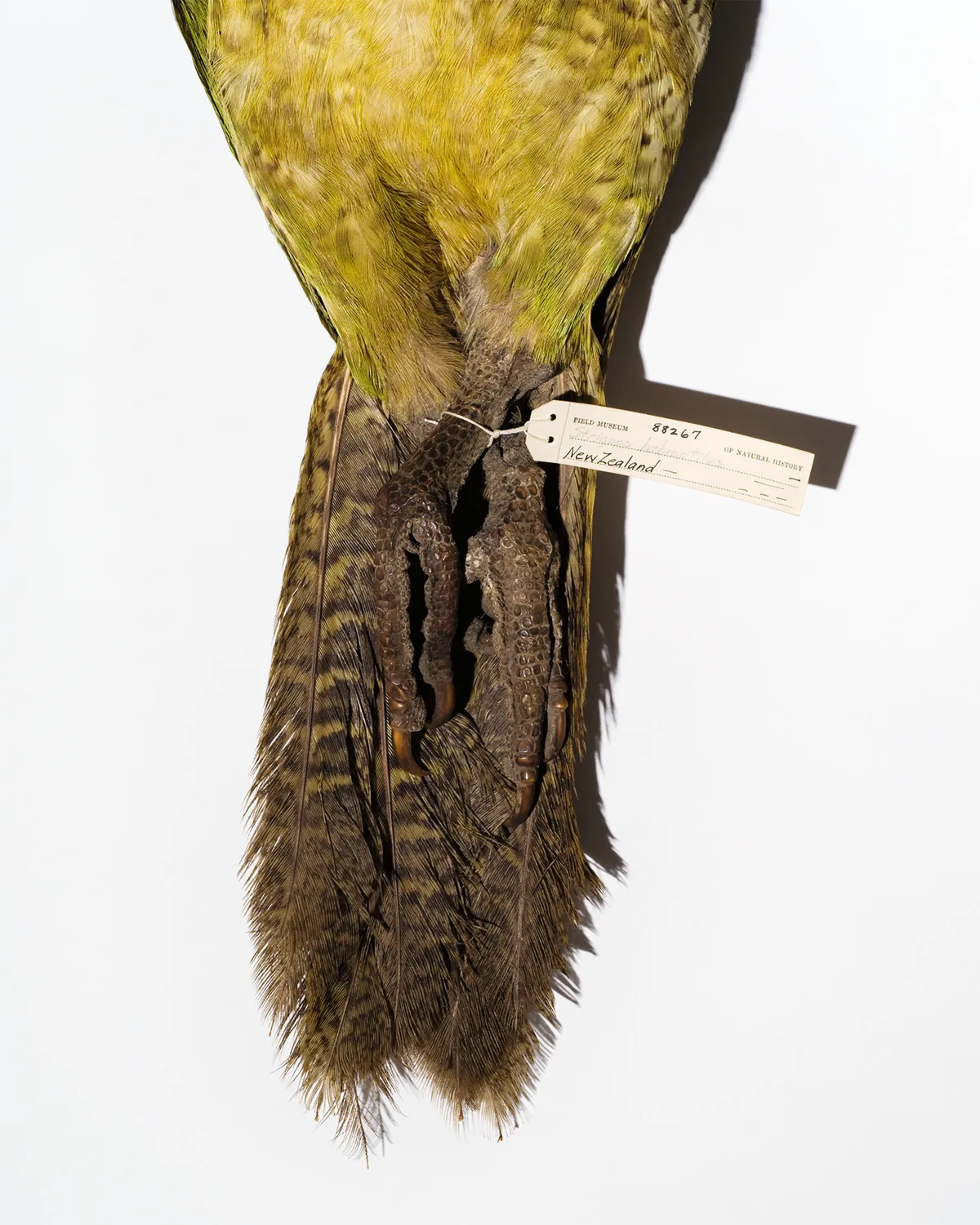
More images from Science Focus:
- The best images in science May 2022
- Lunar rovers ready to explore our Moon
- Could farming without soil solve an impending food crisis?
Atala butterfly
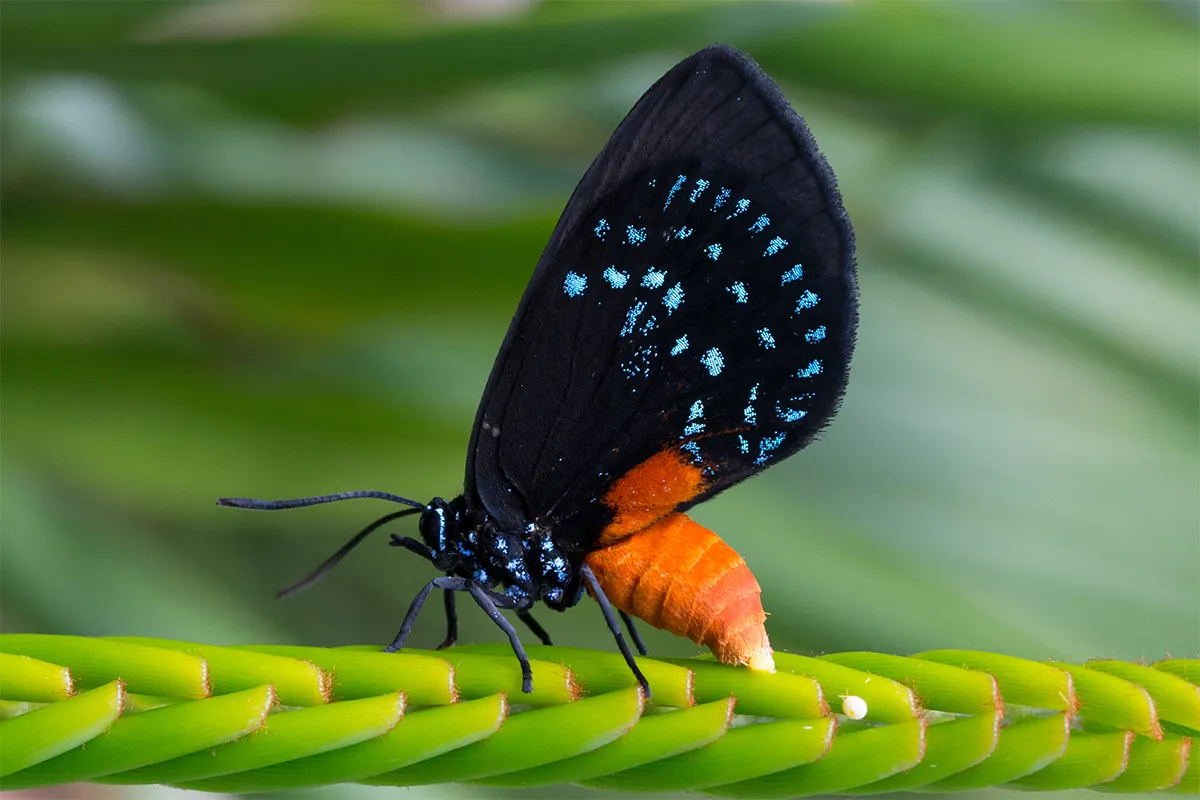
The atala butterfly, with its black wings dotted in iridescent blue and vivid orange abdomen, is native to southeastern Florida, the Bahamas, Cuba, and the Cayman Islands. Its larvae feed exclusively on the coontie plant (Zamia integrifolia), a species of cycad, and in doing so ingest a toxic chemical that remains in its body its entire life, making the butterfly distasteful to potential predators.
The atala was once so abundant in South Florida that in 1888 it was regarded as 'the most conspicuous insect' in the area. The significant abundance of coontie plants quickly changed once the plant started being harvested for its roots as a source of starch. By the 1920s the plants were extremely scarce and by the 1950s the atala was thought to be extinct.
In 1979, a colony of atala butterflies was discovered living on a barrier island off Florida’s east coast near Miami. With the combined efforts of scientists and the general public, the species is now thriving. Thanks to a renewed appreciation for Florida’s native plants, coontie plants are now commonly found in botanical landscapes and gardens. The return of the atala is considered a nuisance by some because they feed on these expensive plants. However, many residents regard the recovery of this attractive species as outweighing the potential damage to their gardens.
Since 2019 the state of Florida has ranked the butterfly as 'apparently secure globally' yet the population continues to fluctuate. “Atala butterflies are en masse right now in St Lucie County [on the east coast of Florida],” said Ken Gioeli, author at the University of Florida’s Institute of Food and Agricultural Sciences. “I refer to them as ephemeral. We have a lot right now in coastal areas but they are likely to completely disappear soon. So basically, we enjoy them when we have them.”

Mexican grey wolf
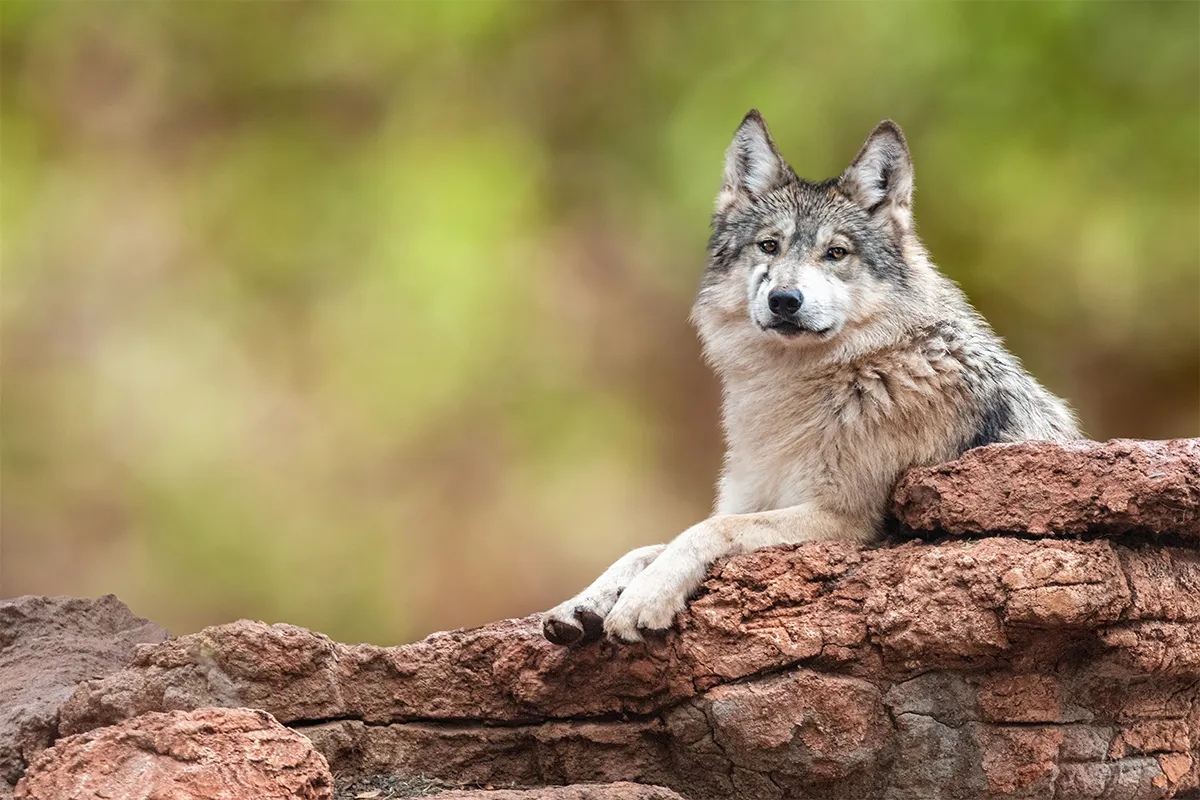
The Mexican grey wolf is the rarest, most endangered subspecies of grey wolf in North America. They once roamed the forested mountains and grasslands of the southwestern United States and northern Mexico. They are slightly smaller than the grey wolves that live further north, no larger than 1.5m long, just under 1m high, and weighing 22 to 36kg.
In the early 1900s, Mexican grey wolves began attacking livestock, resulting in huge financial losses for farmers. This led to a concerted effort from both the US government and private citizens to eradicate the species with whatever means necessary: hunting, poisoning, trapping, and stealing pups from their dens.
By 1918 their population in the US had crashed to 45 individuals in the wild. These same tactics were then used in Mexico, resulting in another rapid decline in numbers. By 1950, the Mexican gray wolf no longer existed in the wild inthe US and fewer than 50 individuals remained in Mexico. The wolf was listed on the US Endangered Species Act in 1976, barely in time to help save it from extinction.
Canis lupus baileyi survives today due to joint conservation efforts between the US and Mexican governments. Five individuals were captured in Mexico between 1977 and 1980to initiate a captive breeding program, and by 1998, 100 wolves were released back into the wild in recovery areas across Arizona and New Mexico. The population of the Mexican grey wolf has since fluctuated but has nearly doubled since 2015. A survey of the population in early 2021 concluded that there are 186 Mexican grey wolves in the wild.
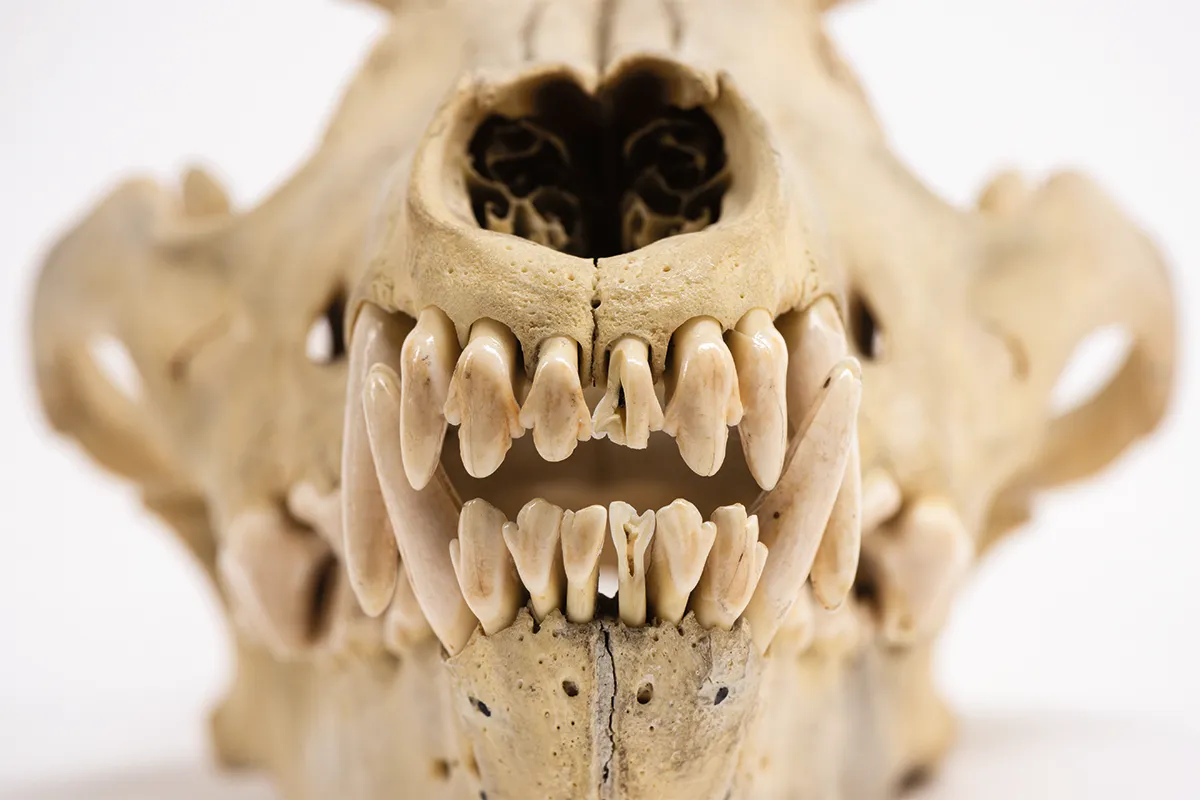
Whooping Crane
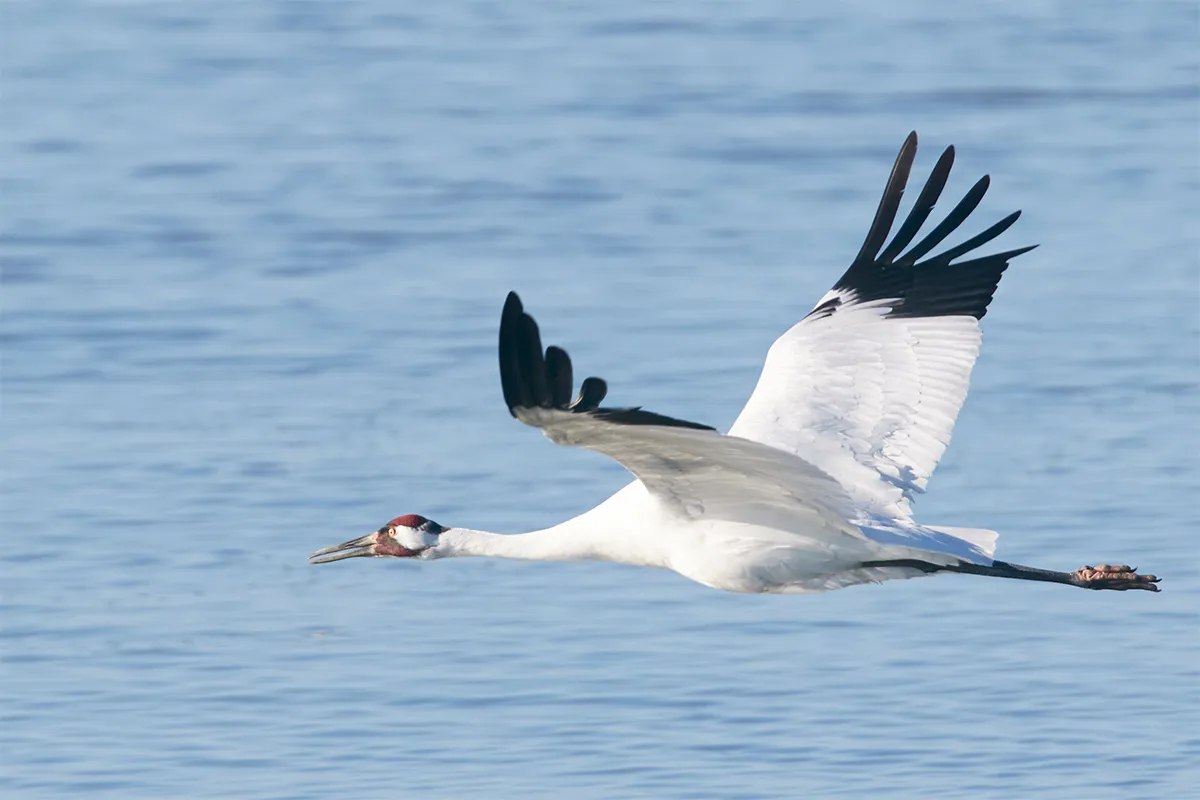
The whooping crane is one of the rarest and tallest birds in North America, standing at 1.5m tall. In 1941, hunting and habitat loss had reduced the whooping crane to just 16 individuals in one population that inhabited Wood Buffalo National Park in the Northwest Territories, Canada. Its second population, a nonmigratory flock in Louisiana, USA, had completely died out. However, intensive efforts over the years to bring the bird back from extinction have resulted in a unique success story.
A 1975 experiment to establish a second wild migratory flock transferred Grus americana eggs from Wood Buffalo to sandhill crane nests in Grays Lake National Wildlife Refuge in Idaho, USA. The sandhill crane foster parents raised the chicks and taught them to migrate to the flock’s wintering grounds in New Mexico. However, the fostered whooping cranes formed pair bonds only with sandhill cranes and the program ended in 1989.
Starting in the 1990s, a joint US and Canadian team worked to rear nonmigratory captive cranes and in 1993 released 33 birds in Central Florida. Several birds were introduced over the years but the flock experienced a high rate of mortality and low reproductive success. Just nine birds remain and biologists continue to study this remnant population.
A more successful effort to establish a migratory flock was started in 1999 by the Whooping Crane Eastern Partnership, another joint US and Canadian effort. Chicks are raised at Necedah National Wildlife Refuge in Wisconsin by costumed handlers working in silence to ensure the chicks do not imprint on humans. Ultralight aircraft engine noise is piped into the nest from egg stage to condition the birds to follow the aircraft along the 1,931 km migration route from Necedah to two national wildlife refugeson the gulf coast of Florida. Thanks to these ongoing efforts, this population has grown to 85 individuals.
In 2011 a reintroduction project began in Louisiana and saw the release of 10 whooping cranes intoa conservation area, another attempt at establishing a nonmigratory flock. With continued monitoring, the flock now numbers around 76 birds, which have now started nesting in the wild again. Out of 14 chicks that hatched there in 2021, 4 survived.
Current numbers of whooping crane in the wild are approximately 650, spread across these four populations, with the original population in Wood Buffalo thriving at around 500 individuals. However, overall numbers of whooping crane remain relatively low, predisposing the species to disease or to a catastrophic weather event that could devastate a flock.
Golden snub-nosed monkey
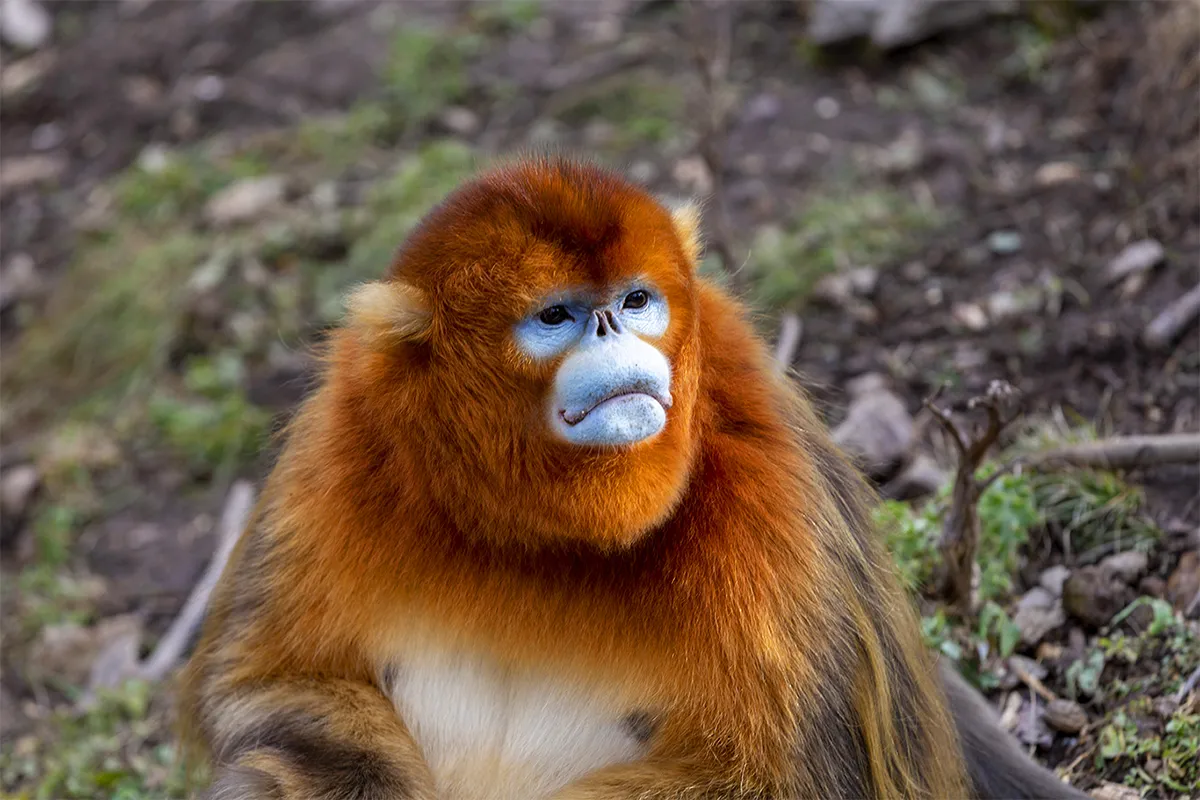
The golden snub-nosed monkey is a species of Old World monkey (those native to Africa and Asia) endemic to western-central China. It is covered in long, thick fur, allowingit to withstand colder temperatures than other primates and it is adapted for the snowy, mountainous forests it inhabits at around 3,000m above sea level.
They live in social groups consisting of one male and several females and spend most of their time in trees, eating leaves, bark, and lichens. There are three other subspecies of snub-nosed monkey, all living in a similar range and habitat, and all are classified as endangered.
Golden snub-nosed monkeys have experienced a 50 per cent population decline in the past 40 years. There are about 8,000 to 15,000 individuals left worldwide. Threats to the monkey started far longer ago, however, as it was thought that its fur had medicinal properties and it was widely hunted.
The species is now mostly threatened by degradation and loss of habitat as forest is cleared for agriculture and commercial logging. Its preferred winter food source, lichens, grows in abundance on the bark of dead trees that are now logged instead of being left to decay in the forest. While golden snub-nosed monkeys occur in a number of protected areas, the steady loss of its habitat puts it at great risk of extinction.
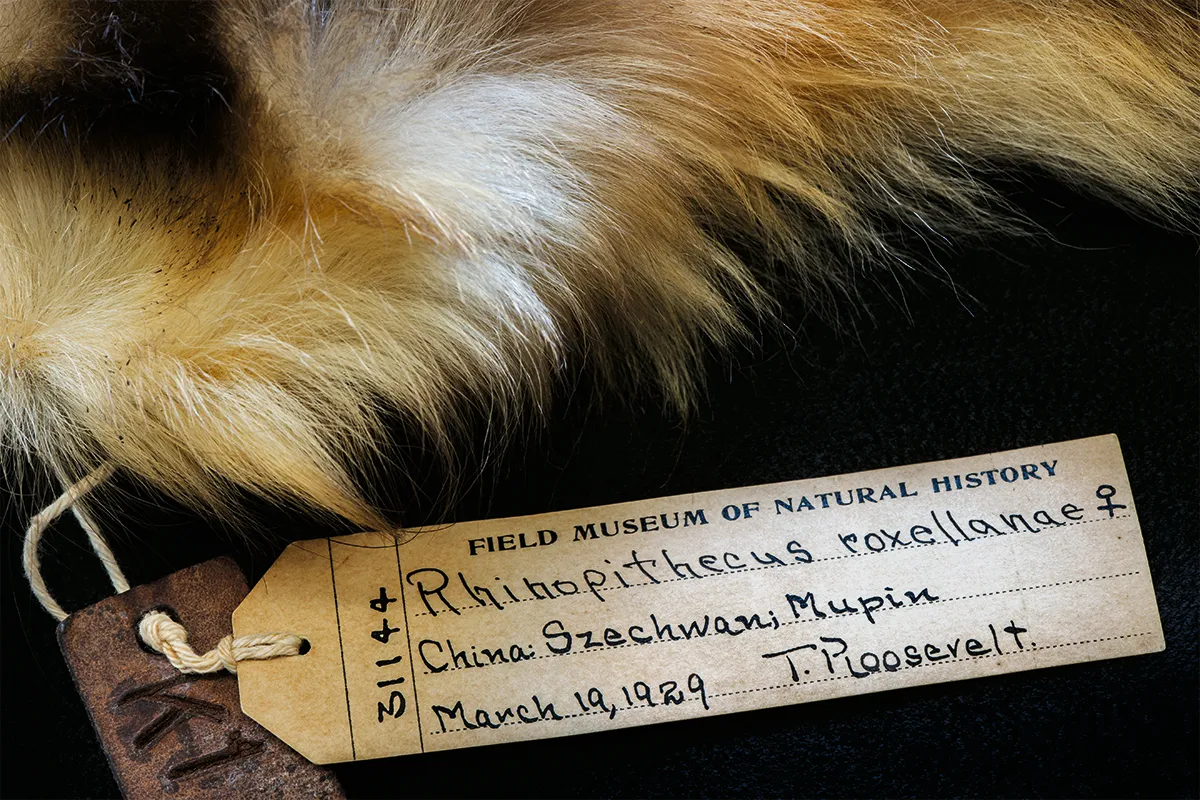
Extinction: Our fragile relationship with life on Earth(£30,Ammonite Press) is available now from all good bookshops
Read more about conservation:


